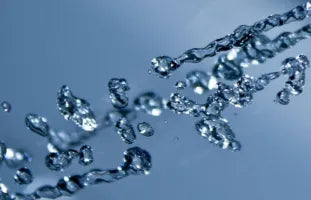Summary:
Although the Solenoid is an insignificant category in industrial products, as an industrial product directly related to the safe production of enterprises, it plays an indispensable role in many fields. It is an automatic instrument actuator that we are familiar with, but since there are many types of Solenoids and many different models under the same model, it is extremely important to correctly choose a Solenoid that suits you.
This article will introduce how to choose a suitable Solenoid from three aspects: fluid properties, Solenoid service life, connectors and pipe diameter.
A Solenoid is an electromagnetic device in a hydraulic line that uses an electric current to generate a magnetic field that drives a solenoid to control the flow of fluid in the valve. Solenoids should not be confused with electrically controlled valves. Electrically controlled valves have an electrical actuation system that can be separated from the valve body. On the other hand, the Solenoid is composed of one unit, and the operating system cannot be separated from the Solenoid body.
The correct selection of Solenoids is an important part of designing a pneumatic control system. The selection of Solenoids should first follow the four principles of safety, reliability, applicability, and economy. Reasonable selection can simplify the circuit and reduce the variety of valves. And quantity, to ensure the accuracy and reliability of the pneumatic system, reduce the consumption of compressed air, reduce costs.
Solenoids can be divided into three categories in principle: direct-acting, step-by-step direct-acting, and pilot-operated. Solenoids are classified according to their functions: water Solenoids, steam Solenoids, refrigeration Solenoids, low temperature Solenoids, gas Solenoids, oil Solenoids, DC Solenoids, high pressure Solenoids, explosion-proof Solenoids.
When choosing a Solenoid, first of all, you need to know which medium it will be used in, that is, the fluid properties. In general, the working medium of the Solenoid does not contain solid particles, such as water, oil, petroleum products, steam, compressed air or heat transfer fluid. This important information can define the material used for your Solenoid. Different fluid properties also need to choose Solenoids of different materials.

Regarding the fluid properties, we need to consider the following aspects, whether the fluid is corrosive, whether the fluid is a high-temperature object, the shape of the fluid, the viscosity of the fluid, and whether the fluid is pure. For the properties of the fluid, we need to consider the properties of the Solenoid in the following three aspects: the material of the Solenoid, the sealing material, and the temperature group.
Most Solenoids are made of brass, stainless steel or plastic. To avoid the risk of failure due to the presence of any solid particles, we recommend that you use an upstream filter before the Solenoid.
When the liquid cleanliness is not high, a filter element must be installed in front of the solenoid valve. Usually the solenoid valve has higher requirements for the cleanliness of the medium. Pay attention to the flow aperture and pipe diameter, usually only two positions of the solenoid valve are controlled; if possible, a bypass pipe can be set up on the equipment to facilitate maintenance; when water hammer occurs, the opening and closing time of the solenoid valve must be adjusted .Pay attention to the influence of ambient temperature on the solenoid valve. The current and power consumption of the power supply should be selected according to the output capacity, usually within the range of ±10%. Pay attention to the high VVA during AC startup.
Second, Solenoids can be bi-directional or have multiple ports. They are usually defined by two numbers, one for the number of channels and the other for the number of positions. For example, a 3/2 Solenoid indicates a 3-way 2-position valve. Most Solenoids operate on an open or closed basis, while some are designed to be proportional to current or voltage.
Depending on your application, and to optimize the power-on time of the solenoid, you can choose between normally closed and normally open Solenoids. If necessary, you can also choose a bistable Solenoid whose disc stays in place even when power is removed. The main advantage of this type of Solenoid is that it consumes almost no energy.
Solenoids are often sensitive to moisture, so you must check the external conditions when using them in order to select a Solenoid with an adequate degree of protection for the expected environment. Of course, you can also choose a lower protection level and install the Solenoid remotely in areas with lower humidity.

Finally, Solenoids also have a nominal diameter definition, since they are integrated directly into the pipeline. Connections and pipe diameters depend on the standards of your country or geographic region and the fluid media used. Different sizes of transmission pipeline ports require Solenoids with different connection methods. There are two common connection methods for Solenoids: flange interface and threaded interface.
If the size of the transmission pipeline is greater than 50, you need to choose a flange interface.If you can choose one of them between 25 and 50, if it is less than or equal to 25, choose the threaded type.Solenoids may also be subject to other standards, such as control equipment installed in areas with explosive atmospheres, especially in the energy industry.
conclusion
All products are strictly inspected to ensure that each product can work reliably. If your Solenoid is damaged or you need to buy a Solenoid, you can go to our website to buy it. Our website will provide you with the most professional purchase guidance.
Related reading:About Lister Petter
















